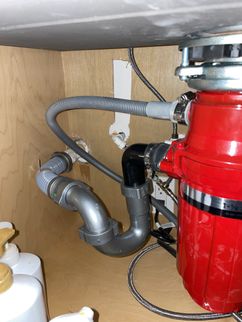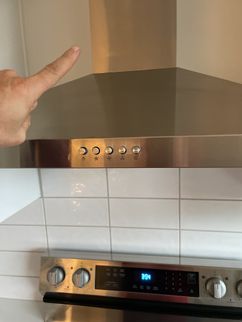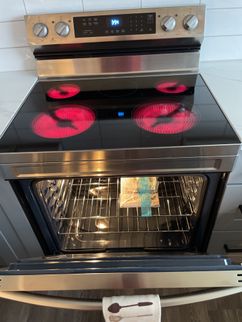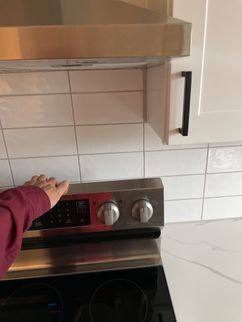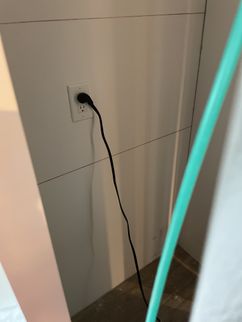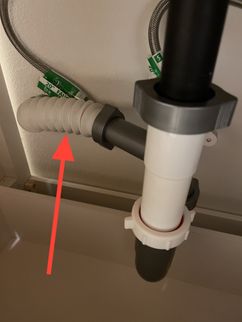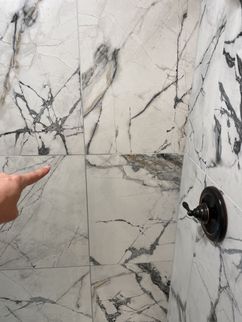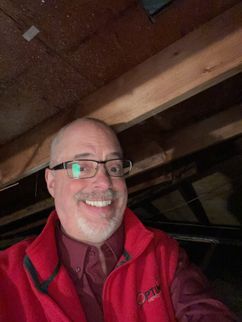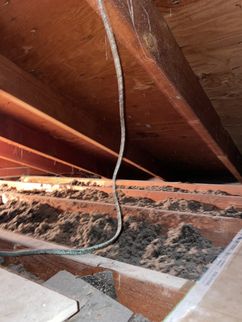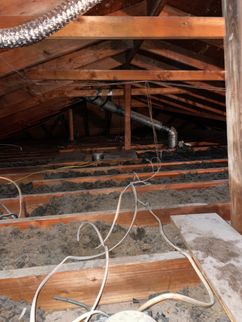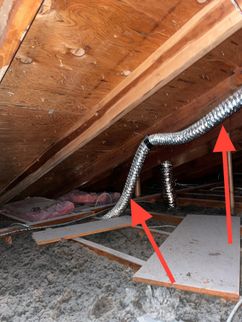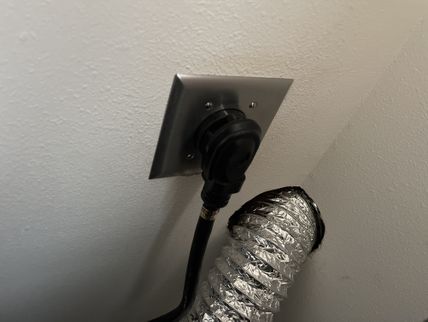The Scope and Purpose of a Home Inspection
Purchasing property involves risk
The purpose of a home inspection is to help reduce the risk associated with the purchase of a structure by providing a professional opinion about the overall condition of the structure. A home inspection is a limited visual inspection and it cannot eliminate this risk. Some homes present more risks than others. We cannot control this, but we try to help educate you about what we don’t know during the inspection process. This is more difficult to convey in a report and one of many reasons why we recommend that you attend the inspection.
A home inspection is not an insurance policy
This report does not substitute for or serve as a warranty or guarantee of any kind. Home warranties can be purchased separately from insuring firms that provide this service.
A home inspection is visual and not destructive
The descriptions and observations in this report are based on a visual inspection of the structure. We inspect the aspects of the structure that can be viewed without dismantling, damaging or disfiguring the structure and without moving furniture and interior furnishings. Areas that are concealed, hidden or inaccessible to view are not covered by this inspection. Some systems cannot be tested during this inspection as testing risks damaging the building. For example, overflow drains on bathtubs are generally not tested because if they were found to be leaking they could damage the finishes below. Our procedures involve non-invasive investigation and non-destructive testing which will limit the scope of the inspection.
This is not an inspection for code compliance
This inspection and report are not intended for city / local code compliance. During the construction process structures are inspected for code compliance by municipal inspectors. Framing is open at this time and conditions can be fully viewed. Framing is not open during inspections of finished homes, and this limits the inspection. All houses fall out of code compliance shortly after they are built, as the codes continually change. National codes are augmented at least every three years for all of the varying disciplines. Municipalities can choose to adopt and phase in sections of the codes on their own timetables. There are generally no requirements to bring older homes into compliance unless substantial renovation is being done.
This is just our opinion
Construction techniques and standards vary. There is no one way to build a house or install a system in a house. The observations in this report are the opinions of the home inspector. Other inspectors and contractors are likely to have some differing opinions. You are welcome to seek opinions from other professionals.
The scope of this inspection
This inspection will include the following systems: exterior, roof, structure, drainage, foundation, attic, interior, plumbing, electrical and heating. The evaluation will be based on limited observations that are primarily visual and non-invasive. This inspection and report are not intended to be technically exhaustive.
Your expectations
The overall goal of a home inspection is to help ensure that your expectations are appropriate with the house you are proposing to buy. To this end we assist with discovery by showing and documenting observations during the home inspection. This should not be mistaken for a technically exhaustive inspection designed to uncover every defect with a building. Such inspections are available but they are generally cost-prohibitive to most homebuyers.
Your participation is requested
Your presence is requested during this inspection. A written report will not substitute for all the possible information that can be conveyed verbally by a shared visual observation of the conditions of the property.
How to Read This Report
Getting the Information to You
This report is designed to deliver important and technical information in a way that is easy for anyone to access and understand. If you are in a hurry, you can take a quick look at our "Summary Page” and quickly get critical information for important decision making. However, we strongly recommend that you take the time to read the full Report, which includes digital photographs, captions, diagrams, descriptions, videos and hot links to additional information.
The best way to get the layers of information that are presented in this report is to read your report online, which will allow you to expand your learning about your house. You will notice some words or series of words highlighted in blue and underlined – clicking on these will provide you with a link to additional information.
This report can also be printed on paper or to a PDF document.
Chapters and Sections
This report is divided into chapters that parcel the home into logical inspection components. Each chapter is broken into sections that relate to a specific system or component of the home. You can navigate between chapters with the click of a button on the left side margin.
Most sections will contain some descriptive information done in black font. Observation narrative, done in colored boxes, will be included if a system or component is found to be significantly deficient in some way or if we wish to provide helpful additional information about the system or the scope of our inspection. If a system or component of the home was deemed to be in satisfactory or serviceable condition, there may be no narrative observation comments in that section and it may simply say “tested,” or “inspected.”
Observation Labels
All narrative observations are colored, numbered and labeled to help you find, refer to, and understand the severity of the observation. Observation colors and labels used in this report are:
- Concern:Urgent repair items that should be addressed now to prevent further issues or inherent safety hazards. This category includes items requiring immediate attention to prevent additional damage to the structure, or to eliminate safety hazards.
- Repair:Repair and urgent maintenance items noted during inspection. Please note that some repair items can be quite expensive to correct. Items identified in this category should be dealt with in a timely manner (less than 6 months) or they will likely turn into items of concern.
- Maintenance:These are routine items that are less urgent than repairs, and also don't pose an immediate safety risk. Maintenance items that get ignored WILL turn into items of repair or concern... Maintenance items should be addressed within the next 12-24 months.
- Due Diligence:Observations on items that are outside the scope of a general home inspection and require further investigation on your part to determine the severity and/or urgency of potential issues.
- Upgrade:Observations that are not necessarily defects (may be grandfathered), but which could be improved for safety, efficiency, or reliability reasons.
- Monitor:Items that do not currently appear to require action, but should be watched to see if action may be needed in the future.
- Informational:Detailed description of various aspects of the property noted during the inspection. Generally good stuff to know.
- Not Inspected:Refers to limitations and/or exclusions to the home inspection. Items with this designation are not part of the SOP, but may be commented on as a courtesy.
Summary Page
The Summary Page is designed as a bulleted overview of all the observations noted during inspection. This helpful overview is not a substitution for reading the entire inspection report. The entire report must be read to get a complete understanding of this inspection report as the Summary Page does not include photographs or photo captions.
Summary
Concerns
- G-5 Grounds:
The basement stair well drain appears to be not connected to anywhere... The drain cover was supported by rocks, and when I dug it out there is no piping or drainage underneath. If this is allowed to continue, you can expect erosion and eventually, potential failure of the concrete in the surrounding area. This is not actually a drain.
- DPB-2 Decks, Porches and Balconies:
The deck posts are done in pressure treated lumber and they are installed below grade, or in soil contact. This is not recommended as the soil contact can hasten wood decay. I tried to probe below the soils to look for wood decay and wood decay was found. Because visual inspection is limited, there could be additional decay. I recommend additional inspection of the deck posts by a qualified general contractor. Further evaluate this condition and implement repairs as needed to eliminate all wood decay, all conditions conducive to wood decay and ensure the posts perform reliably. Ideally, the post footings lift the wood above grade.
- DPB-3 Decks, Porches and Balconies:
The deck beams do no appear to be reliably connected to the posts. When not done to normal standards it is difficult to predict how this connection will perform. Have this further evaluated and repaired as recommended by a qualified general contractor.
- DPB-4 Decks, Porches and Balconies:
This is an older deck that does not comply with minimum modern safety standards. In addition, the deck is showing signs of age and deterioration that indicate it is close to the end of its useful service life. I recommend additional inspection of the deck by a qualified general contractor. Update or repair the deck as desired / recommended. Given the visible condition of this deck, I would consider updating. Examples of observations noted during inspection include:
- ES-1 Electric Service:
No permit stickers or paper work related to any electrical work were found on the premises, and substantial electrical work was done as part of this remodel. Inquire with the seller for any additional information about this installation. Numerous instances of non-professional work were documented, making non-visible elements suspect. A competent, licensed electrician should be retained to examine the entire system and repair, augment or modify it as needed to ensure that it is safe and dependable. This examination by a specialist should take place prior to the expiration of your inspection timeframe.
- ES-5 Electric Service:
It appears that this panel was re-utilized from a different location. It is not the proper size for the service, it has too many breakers for the home, the cover doesn't fit and the labeling on the cover is for a different house that has air-conditioning and a car charger. It looks like it was picked up in a swap meet.
There is nothing about the electrical work in this house that appears professional... A prudent person would probably have the home re-wired from scratch.
- ES-6 Electric Service:
The ground rod at the exterior is not the proper size for a building ground, it is for an accessory ground. Proper current grounding techniques require two ground rods driven 8 feet deep 8 feet apart and tied together. Yes Home is currently ungrounded! The electrical grounding system is important to discharge electrical surges and static electricity that can get onto the house's electrical system. The various parts of the grounding system, which can be many, are required to be bonded together. Have the grounding and bonding system further evaluated and repaired as recommended by a licensed electrical contractor to ensure life safety.
- G1-1 Garage:
Multiple unprotected openings were found in the garage wall fire separation. This should be repaired to complete the fire separation. Standards recommend complete sheetrock walls and ceilings between the garage and all habitable space. Use type C or type X sheetrock as needed to complete large openings in the fire separation and seal up all small gaps in the walls with fire stop caulking or drywall mud as needed.
Current code requires that sheet rock on the ceiling to be 5/8 thickness or better, and this is not...
- EDFW-5 Electric Distribution and Finish Wiring:
The outlet at the kitchen countertop next to the refrigerator cannot be used because you cannot fit a plug into it! The cabinetry should be open at this point so that you can utilize the receptacle.
- EDFW-6 Electric Distribution and Finish Wiring:
No smoke alarms were noted anywhere. Smoke alarms are an important safety feature and are recommended inside all bedrooms and in hallways outside of all sleeping areas. It is also recommended that there be at least one smoke alarm on each floor of the house. I recommend having smoke alarms installed to meet modern safety standards.
- EDFW-9 Electric Distribution and Finish Wiring:
The installation of carbon monoxide alarms is recommended for all homes that have fuel burning appliances. Also, Washington State law (WAC 51-51-0315) requires UL 2034 approved carbon monoxide alarms in ALL homes and condominiums being sold in Washington State. The location should be: at least one alarm outside of all sleeping areas and one on each floor of the house. Best practices are to have these alarms hardwired with a battery back-up - though requirements are for the installation to meet manufacturer's specifications. Carbon monoxide is a colorless, odorless gas that can cause sickness, nausea and even death. Alarms have a useful service life of roughly 6 years, so changing them more frequently than smoke alarms is recommended. For more information, consult the Consumer Product Safety Commission at 1-800-638-2772.
- HCFV-6 Heating, Cooling, Fireplaces and Ventilation:
The heating ductwork is dirty and needs to be cleaned to improve indoor air quality and efficiency of the heating system.
- P-11 Plumbing:
Testing of the plumbing system today, the water tested as too hot - 138 degrees F. This is a scald hazard. To prevent scalding, standards recommend indoor hot water temperatures do not exceed 120 degrees. There is some evidence that hot water temperatures should be greater than 130 degrees to prevent Legionnaires' disease from developing in the water heater. If this is a concern, you can heat the water in the tank to 140 degrees F and have a tempering valve installed at the hot water tank. Have this further evaluated and repaired by a licensed plumber or simply turn down the temperature as desired to eliminate a scald hazard.
- I-1 Interior:
The windows are all missing screens. Inquire with the flipper to make sure window screens are included and installed as desired. It is common to leave them off during construction to prevent damage.
Repairs
- G-4 Grounds:
The asphalt driveway surface has deteriorated and is full of potholes and debris suggesting the driveway requires re-surfacing for standard performance.
- G-6 Grounds:
The railroad ties used for retaining walls are old and rotting, creating a condition conducive to wood destroying insects - see left side. It is important to remember that retaining walls made of railroad ties are always temporary. Replacement with a non-organic material is recommended to prevent future earth movement issues and reduce any seismic concerns.
- G-7 Grounds:
The riser heights for the exterior deck stairs are not even and are not to modern standards. This is a trip and safety hazard. The height of the tallest riser shall not exceed the smallest riser by more than 3/8th of an inch. Hire a licensed general contractor to further evaluate and repair.
- G-8 Grounds:
The stairs have a handrail that does not meet one of the approved safety profiles This should be a round railing that is between 1 and 1/4-inches - 2-inches in diameter. If the railing is not round it must have a finger groove that is 3/4 of an inch down from the tallest point of the rail, please see illustrations attached to this report showing some of the recommended handrail profiles. Graspable handrail should also be 1.5 inches from the wall and have returns into the wall. Have a qualified contractor build suitable railings to reduce the potential for falls. Locations where an improved handrail is needed include: the back deck.
- ES-3 Electric Service:
Inadequate labeling of the electric panel circuit breakers was noted during inspection. This should be corrected for improved safety.
Also, openings were noted in the dead front cover to the electric panel. This is unsafe as it does not adequately protect the energized area of the electric panel. Cover all open knock-outs with listed covers.
- ES-8 Electric Service:
Have the electrical bonding system checked by a licensed electrician. Adequate bonding could not be verified at the main water pipe or pipes by the water heater or the gas piping. This is an important safety feature to ensure safe control of stray voltage on metal systems in the house.
- G1-2 Garage:
The door between the garage and the house does not appear to be a rated door. Rated doors are important fire safety protection to slow a fire from spreading from the garage into the house. Garage occupant doors should have a UL listing plate for a minimum 20-minute rating. Solid wood doors at least 1 and 3/8th-inches thick are also considered to be rated for 20-minutes. Have this door further evaluated and updated as recommended by a qualified general contractor.
- G1-3 Garage:
The self-closing hinges on the garage occupant-door are missing. This safety device is recommend to ensure the door to the garage is closed to keep pollutants and even fire from spreading into the house. This is a requirement that has been enforced and then removed from building standards over the years. It is currently recommended considered best-practices for improved safety.
- EDFW-1 Electric Distribution and Finish Wiring:
Some of the outlets in the house are still showing open grounds, which means they're probably the original two wire circuits. The whole house was not fully rewired as part of the remodel, poor, the electrician has some loose connections that need to be chased down and repaired.
- EDFW-3 Electric Distribution and Finish Wiring:
Hire a licensed electrician to eliminate all open grounds. This is a common condition in older buildings (prior to 1962) where three prong receptacles have been installed on an older two wire system. This creates a safety hazard as it is false advertising; appliances that rely on an equipment ground to discharge a fault can be plugged into ungrounded circuits. This disables the important safety feature of an equipment ground. Proper repair can include:
- Running an equipment grounding conductor or a new three-wire circuit
- Filling the third prong of the receptacle or restoring a two-prong receptacle or
- Installing GFCI protection for this circuit and labeling the open ground receptacles
If GFCI protection is used, the outlets on this circuit should be labeled so it is clear they are protected. Examples of locations where open grounds were found include:
- EDFW-4 Electric Distribution and Finish Wiring:
The use of GFCI (Ground Fault Circuit Interruption) protection is inconsistent with modern minimum standards for safety. GFCI protection is recommended for the electrical receptacles in the following locations: the two dedicated kitchen appliance circuits, all receptacles within 6 feet of a sink, bathrooms, exterior, garage, unfinished basements, laundry and all wet and damp locations. GFCI's protect against electrocution by limiting the duration of an electrical shock. These are an important modern safety feature that have proven to save lives. Hire a licensed electrician to further evaluate and update GFCI protection for improved safety. Examples of observations noted during inspection include:
- HCFV-3 Heating, Cooling, Fireplaces and Ventilation:
Annual servicing of gas forced air furnaces is recommended for safe and reliable heat. I could not find recent service records on the furnace. A servicing is recommended if one has not been done in the last year. The furnace was tested during inspection and was operational.
Examples of observations noted during inspection include:
- The blower fan was dirty at the time of inspection
- The air filter was dirty at the time of inspection
- No recent service records were noted
- HCFV-7 Heating, Cooling, Fireplaces and Ventilation:
This building has no provisions for mechanical ventilation (became a requirement in 1991)- I did not find a 24 hour timer for a fan anywhere - perhaps I missed one? Installing a bath or laundry fan on a 24 hour timer is recommended to ensure mechanical air changes. This can help keep relative humidity in check. As a general rule, keep relative humidity below 50% in cold weather to reduce chances for condensation. You can monitor relative humidity with inexpensive temperature and relative humidity gauges - I use one made by Acurite. For a nice fan system I recommend looking at Panasonic Whisper Green fans - these do not rely on a timer and run continuously to facilitate air changes. http://www.panasonic.com/business/building-products/ventilation-systems/products/whisper-green.asp
- P-7 Plumbing:
Install a foam pad below the water heater to prevent corrosion of the tank and to reduce heat loss to the cold concrete slab. Please note that foam pads are required for electric water heaters installed in contact with a concrete floor. They are recommended for gas water heater installed on concrete.
- P-8 Plumbing:
No drain pan has been installed below the water heater here. A drain pan is recommended under water heaters that are located in finished spaces or where a leak could damage finishes. Where a pan does not already exist, the tricky part is providing a drain to the outside. A pan without a drain is often of limited benefit / protection. For improved protection from accidental water heater leaks, and where a drain is difficult to install, consider a pan with a moisture alarm and a flood-safe device such as this: Watts Water Heater Leak Prevention.
- P-9 Plumbing:
The expansion tank at the water heater appears to be water logged - note water leaked out of the Schrader valve during testing. This will not allow for proper absorption of water pressure during routine thermal expansion of the water in the house. The expansion tank should be repaired or replaced as recommended by a plumber to ensure it is performing as intended.
- P-10 Plumbing:
The discharge tube for the water heater temperature and pressure relief valve (TPRV) is employing more than 4 elbows. This restricts the opening of the discharge tube and can present a safety hazard. Ideally, the discharge tube for a relief valve:
- Terminates to an exterior location or above a drain, though this is not always possible
- Terminates between 6 and 24-inches off the ground (UPC)
- Slopes to drain to prevent water pooling inside the discharge tube
- Is not made from pipe with an inside diameter less than 3/4 on an inch
- Terminates to a visible location that can be monitored for leaks and discharges
- Does not have a threaded termination point which would prevent accidental capping of this important discharge
- Does not terminate into a drain pan
I recommend having this relief valve discharge tube further investigated and repaired as recommended by a licensed plumber.
- K-3 Kitchen:
The dishwasher has not even been run and is still in its packaging. It is unclear to me if installation is complete. Be sure to complete installation, remove packaging and test this dishwasher several times to verify proper operation.
- K-5 Kitchen:
Burning off the new oven is recommended to eliminate smoking and odor during operation. New ovens will always produce acrid smoke during the first use. Running for several hours prior to use and ventilating the space and help get this new appliance ready for daily use.
- K-6 Kitchen:
An anti-tip device is needed to prevent this range from tipping during operation of the oven door. This is a small clip that secured the back adjustable feet of the range to the floor.
- K-7 Kitchen:
The refrigerator ice maker was off during inspection and I found no plumbing to the behind the refrigerator area. Install plumbing here if you wish to have an ice maker.
- AB-1 All Bathrooms:
Corrugated waste pipe was used to drain this sink. This is not a listed plumbing product and tends to indicate plumbing work that has not been done by a licensed plumber. Use smooth wall pipe only. Hire a licensed plumber to further evaluate and repair as needed.
- LF-1 Laundry Facilities:
Plastic dryer transition duct was noted in use to connect the dryer to the rigid vent. This product is not recommended as it has proven to be unreliable and a potential fire hazard. Improvement to a corrugated metal flex duct is recommended.
Maintenance Items
- G-1 Grounds:
Downspouts are discharging into small storm drains. These could be susceptible to restrictions, clogs or backups. Monitor during wet weather and improve or repair as needed. It is important to ensure roof runoff is successfully carried away from the building.
- G-3 Grounds:
Inadequate clearance between the siding and the soils was noted. This is conducive to wood destroying organisms as it can trap water against the siding. Where possible, a gap should be provided to allow the wood to keep dry. Generally, a 6-inch clearance is recommended between siding and soils. Please note that this is a fairly common installation, and inadequate clearances can often be kept maintained by being diligent about keeping new soils, mulch and leaves from accumulating.
- RCG-4 Roof, Chimney and Gutters:
This chimney is no longer in use and could be removed if you so desire.
If you are going to keep the chimney, then it needs some attention.
It has been painted with latex paint, and that's not great for a chimney since it traps moisture. You may want to remove the latex paint and replace it with a masonry paint.
- P-4 Plumbing:
No cleanout was noted for the sewer line. Sewer line cleanouts are necessary for clearing drain obstructions and for inspecting the building sewer with a sewer camera. While code allows cleanouts to be in crawl spaces, a preferred method is to extend them to an area that is more readily accessible. The UPC requires that underfloor cleanouts be no farther than 20 ft. from the access opening, with a 30 in. wide, 18 in. high path from the access to the cleanout. When those conditions cannot be met, the cleanout must be extended to the exterior. Inquire with the seller for additional information and install an accessible cleanout as recommended by a qualified plumbing contractor. Please note that many older buildings do not have sewer line cleanouts; these are often added when sewer line work becomes necessary.
- K-2 Kitchen:
No air gap noted for the dishwasher waste line but they did run a high loop. This is not done to WA state standards, but is generally satisfactory and many jurisdictions in the state allow for simply a "high loop" installation. However, this high loop is not run high enough to be effective. It should be routed up to the underside of the counter and secured there.
- K-4 Kitchen:
The filters for the cooktop fan appeared to be dirty. Cleaning is recommended for improved reliability and safety as you do not want to allow for extensive grease build-up.
In this case it is construction debris rattling around in there, not grease.
- AB-2 All Bathrooms:
Any time you have ceramic tiles in a tub/shower surround, it is advised to get on a schedule of sealing the grout at least once every few years. Since builders NEVER do this (it takes too much time), the inspector suggests you start with a fresh grout sealing. If this is a composite grout, it may not require sealing. You would need to confirm this with the builder, there is no way to verify visually.
Due Diligence Items
- RCG-2 Roof, Chimney and Gutters:
The roofing material on this building is a recently installed dimensional or architectural grade shingle. These are often rated as 30-40 year shingles. In practice, as a roof assembly, these tend to last about 25-30 years depending on the quality of the installation, the steepness of the roof and the exposure. The installation appears neat and professional. Many professional roofing companies will offer limited workmanship warranties. Please note that roofs are not a shingle. they are an assembly and they require regular cleaning and maintenance to keep them performing reliably. Examples of observations noted during inspection include:
Recommendation
Inquire with the seller about any warranty and/or installer information for this new roof covering installation.
- P-5 Plumbing:
A video camera sewer scope is recommended. An evaluation of the sewer line below the ground is beyond the scope of this inspection. Regardless of the age or location of the building, a sewer scope is recommended to further evaluate the sewer line and the below ground connections between the house and the municipal sewer main. Sewer scopes are done using video cameras and can reveal the materials, condition and reliability of the sewer line. If that has not been done recently, I recommend having a sewer scope performed. Defects have been found in brand new pipes as well as old lines.
- K-1 Kitchen:
Inquire with the seller about appropriate products and directions for sealing and caring for your slab stone or engineered stone countertops. It is common to use sealers to seal the stone and other products to protect them from stains. Citric acids and oils can stain these countertops.
Upgrade Items
- FSD-1 Fuel Storage and Distribution:
Consider improving the safety of the gas meter connection with a Northridge Valve. These are seismic protection that can automatically shut off the gas in the event of an earthquake.
In the meantime, you will want to familiarize yourself with the location and operation of this shutoff valve. In case of a seismic event it would be prudent to close this valve to avoid the possibility of a natural gas explosion in your home. The proper operation of this valve requires the use of a tool. Some people attach a wrench to the pipe near the valve so that they don't have to look for one in an emergency. Inspector suggests attaching a simple box end wrench or purpose built tool of the appropriate size.
- P-2 Plumbing:
An old main water shutoff valve was noted for this home. These can be an unreliable means of shutting water off to the home. Sometimes old valves like this may work to turn off the water but cannot be turned back on, or they leak after adjustment. I recommend updating to a modern ball valve for improved reliability.
The inspector did not touch this valve for functionality, that is outside the scope of a home inspection.
- AB-3 All Bathrooms:
Consider installing a 1-hour timer for bath fans so they run after use. Proper moisture control requires the fan to be operating at least 20 to 30 minutes after you have vacated the space, in order to properly exhaust humidity. Alternatively, you can replace the simple switch with a humidistat controlled switch that makes this operation automatic.
- A-4 Attic:
The ceiling insulation in one or more areas of the attic is below today's energy standards. Heating and cooling costs will be higher due to reduced energy efficiency. Recommend that a qualified person install insulation as necessary and per standard building practices (typically R-38). If you add more insulation, be sure to maintain adequate ventilation throughout the process (install baffles in the soffits before blowing in any insulation). Also prior to insulation repairs/upgrades it is best practices to seal air leakages, and be sure you have completed any wiring or other projects that are needed in the attic.
- SB-1 Structure and Basement:
As always with older homes steps can be taken to improve the seismic stability of this home. Improvements include bolting the home to the foundation, adding sheer panels to pony walls and installing positive connections between posts and beams and posts and footings. Consult with a licensed general contractor or company specializing in seismic retrofits to further evaluate and improve the structure.
Items To Monitor
- G-2 Grounds:
The downspouts have been given extensions and drain rock has been placed in strategic locations. The site may be wet during the rainy months. Additional drainage may need to be installed.
📃 The Optimized sample report
Grounds
Drainage and Site
Driveways/Walkways/Flatwork
Window and Stairwells
Retaining Walls
Exterior Stairs
Fences
Electric Service
Electric Service Permits Found
Electric Service
Electric Service Equipment
Electrical Grounding System
Electrical Bonding System
Electric Distribution and Finish Wiring
Branch Wiring
Receptacles and Fixtures
Smoke and Carbon Monoxide Alarm Systems
Heating, Cooling, Fireplaces and Ventilation
Heating System
Air Filters
Heating and Cooling Distribution Systems
Mechanical Ventilation Systems
Plumbing
Water Meter
Water Service Supply
Distribution Pipe
Waste Pipe and Discharge
Water Heater
Water Temperature
Exterior Hose Bibs
Interior
Floors and Floor Materials
Walls, Ceilings, Trim, Hallways and Closets
Stairs and Railings
Interior Doors
Windows
Kitchen
Sinks and Faucets
Cabinets and Countertops
Disposers
Dishwasher
Ventilation Method
Ranges, Ovens and Cooktops
Refrigerators
General Comments
Building Characteristics, Conditions and Limitations
Style of Home: Split level
Type of Building : Single Family (2-story)
Approximate Square Footage: 1400
Approximate Year of Original Construction: 1965
Attending the Inspection: Buyer and Buyer's Agent
Occupancy: Unoccupied, but staged with furniture
Animals Present: No
Weather during the inspection: Partly Cloudy
Approximate temperature during the inspection: 50 - 55[F]
Ground/Soil surface conditions: Saturated
For the Purposes of This Report, the Front Door Faces: SE
The approximate square footage listed here is listed as a courtesy and is based off of public records and disclosure. An evaluation of square footage of the buildings and property lines is beyond the scope of this inspection.
In 1978, federal laws were passed to prohibit use of lead and asbestos in building materials. Manufacturers of building materials were allowed to sell existing stocks of materials that were manufactured with lead and asbestos, so even buildings constructed as late as the mid-1980's could possibly contain lead or asbestos. Identification and testing for lead and asbestos and other environmental testing is beyond the scope of this home inspection. If you wish to seek additional information, I recommend contacting an environmental lab or industrial hygienist.
Solid conductor aluminum wiring was used in residential construction for 15 and 20-amp circuits in the 1960's through the 1970's. This wiring has proven to be problematic and a fire hazard, primarily due to problems with loose connections and metal fatigue. I looked hard to find any signs of solid conductor aluminum here. No signs were found. There is always a chance that solid conductor aluminum wiring exists and is concealed from view. If this wiring is ever uncovered during subsequent renovation work, I recommend removal and replacement.
This house was vacant / unoccupied at the time of inspection. Some houses present risks beyond what we are able to discover during a visual inspection. Vacant houses are just such houses as the plumbing and wiring systems, as well as the appliances, have not been tested under real-life conditions for a long time. While some of these systems may have been working at the time of the inspection, it is difficult to know how they will respond to regular use and they should be considered unreliable at best. A home inspection verifies basic functionality in short bursts of time, rather than full functionality over extended periods. For example, septic systems may initially function during the inspection and then fail under a live load (multiple people/days of use, etc...). Plumbing traps may operate with no signs of leaks in the moment and then let go when being actively used for a few days. Seals dry up and leak. Sewer/Septic lines with roots may allow water to flow during the inspection, but then fail when solids and tissue are flushed [Insert note about the importance of getting a sewer scope inspection here]. It takes a few weeks of full normal usage to be able to ascertain the baseline for a homes systems.
This house is being sold as newly renovated
Newer construction presents a more difficult inspection challenge due to the lack of any history at the structure. Items such as foundation settling, materials aging and other conditions that would be evident due to the natural aging and usage of the house have not yet become evident. Often there will be adjustments and minor repairs at most new structures over the first few years of occupation that will become evident only during usage and should be expected with any new structure.
Even though this is not a new structure, I would recommend gaining permits and "as-built" drawings from the current owner since there was a substantial renovation that occurred for which permits may have been taken out. These can be useful in the future so that changes, repairs or references can be made to this information. Warranties for all the appliances and interior systems equipment should also be saved.
For new renovations, accumulating some spare materials such as floor tile, specialty type trims or tile work, roofing and other materials for minor repairs and replacements in the future is recommended. Generally as the years go by, model numbers and glazing types for materials change and it is difficult sometimes to get matching material. Keeping a small stockpile on hand can be very helpful in repairing the structure in the future.
Grounds
Drainage and Site
Clearance to Grade: Standard, Siding Too Close to Soils - Monitor
Downspout Discharge: Above grade, Downspouts Into Small Storm Drains - Monitor
Site Description: Moderate slope
Inadequate clearance between the siding and the soils was noted. This is conducive to wood destroying organisms as it can trap water against the siding. Where possible, a gap should be provided to allow the wood to keep dry. Generally, a 6-inch clearance is recommended between siding and soils. Please note that this is a fairly common installation, and inadequate clearances can often be kept maintained by being diligent about keeping new soils, mulch and leaves from accumulating.
Driveways/Walkways/Flatwork
Driveway: Asphalt
Walkways: None noted
Patios: None noted
The asphalt driveway surface has deteriorated and is full of potholes and debris suggesting the driveway requires re-surfacing for standard performance.
Window and Stairwells
Basement Well (Blocked Drain)
The basement stair well drain appears to be not connected to anywhere... The drain cover was supported by rocks, and when I dug it out there is no piping or drainage underneath. If this is allowed to continue, you can expect erosion and eventually, potential failure of the concrete in the surrounding area. This is not actually a drain.
Retaining Walls
Retaining Wall Material: Railroad Ties
The railroad ties used for retaining walls are old and rotting, creating a condition conducive to wood destroying insects - see left side. It is important to remember that retaining walls made of railroad ties are always temporary. Replacement with a non-organic material is recommended to prevent future earth movement issues and reduce any seismic concerns.
Exterior Stairs
Exterior Stairs: These stairs are at the deck, Non-standard
The riser heights for the exterior deck stairs are not even and are not to modern standards. This is a trip and safety hazard. The height of the tallest riser shall not exceed the smallest riser by more than 3/8th of an inch. Hire a licensed general contractor to further evaluate and repair.
The stairs have a handrail that does not meet one of the approved safety profiles This should be a round railing that is between 1 and 1/4-inches - 2-inches in diameter. If the railing is not round it must have a finger groove that is 3/4 of an inch down from the tallest point of the rail, please see illustrations attached to this report showing some of the recommended handrail profiles. Graspable handrail should also be 1.5 inches from the wall and have returns into the wall. Have a qualified contractor build suitable railings to reduce the potential for falls. Locations where an improved handrail is needed include: the back deck.
Fences
Exterior Fencing: Present
The property has a fencing system in place. Inspection and evaluation of fencing is beyond the scope of a home inspection. If the fencing system is important for your use of this property, I recommended a self-examination to see how it will meet your needs (containment). Any comments regarding the fencing in this report are provided as a courtesy.
Exterior Siding, Doors and Windows
Siding and Trim
Primary Siding Material: Wood
Trim Material: Wood
Eaves
Open rafters, Plywood
Exterior Doors
Exterior Door Styles: Solid core, Metal, Sliding glass
Exterior Window Frames
Window Frames: Vinyl
Decks, Porches and Balconies
Wood Decks Porches and Balconies
Present
Structure: Ground contact treated lumber, Non-treated lumber
Ledger Board: Non-standard
Guardrail: Standard
Posts, Beams and Footings: Rot in Base of Posts, Post to Beam - Non-standard Connections
The deck posts are done in pressure treated lumber and they are installed below grade, or in soil contact. This is not recommended as the soil contact can hasten wood decay. I tried to probe below the soils to look for wood decay and wood decay was found. Because visual inspection is limited, there could be additional decay. I recommend additional inspection of the deck posts by a qualified general contractor. Further evaluate this condition and implement repairs as needed to eliminate all wood decay, all conditions conducive to wood decay and ensure the posts perform reliably. Ideally, the post footings lift the wood above grade.
The deck beams do no appear to be reliably connected to the posts. When not done to normal standards it is difficult to predict how this connection will perform. Have this further evaluated and repaired as recommended by a qualified general contractor.
This is an older deck that does not comply with minimum modern safety standards. In addition, the deck is showing signs of age and deterioration that indicate it is close to the end of its useful service life. I recommend additional inspection of the deck by a qualified general contractor. Update or repair the deck as desired / recommended. Given the visible condition of this deck, I would consider updating. Examples of observations noted during inspection include:
To see a prescriptive guide for residential wood deck construction click this link:
Fuel Storage and Distribution
Gas Meter
Present
Consider improving the safety of the gas meter connection with a Northridge Valve. These are seismic protection that can automatically shut off the gas in the event of an earthquake.
In the meantime, you will want to familiarize yourself with the location and operation of this shutoff valve. In case of a seismic event it would be prudent to close this valve to avoid the possibility of a natural gas explosion in your home. The proper operation of this valve requires the use of a tool. Some people attach a wrench to the pipe near the valve so that they don't have to look for one in an emergency. Inspector suggests attaching a simple box end wrench or purpose built tool of the appropriate size.
Gas, Propane and Oil Piping
Gas Piping Materials Noted: Steel
Electric Service
Electric Service Permits Found
No permit stickers or paper work related to any electrical work were found on the premises, and substantial electrical work was done as part of this remodel. Inquire with the seller for any additional information about this installation. Numerous instances of non-professional work were documented, making non-visible elements suspect. A competent, licensed electrician should be retained to examine the entire system and repair, augment or modify it as needed to ensure that it is safe and dependable. This examination by a specialist should take place prior to the expiration of your inspection timeframe.
Electric Service
Service Entrance: Above Ground
Apparent Meter Base Amperage: 200
Electric Service Equipment
Service Entrance conductor Size: Aluminum, #2, 100 amps
Main Panel Approved Amperage: 200 amps
Main Electric Panel Location: Garage
It appears that this panel was re-utilized from a different location. It is not the proper size for the service, it has too many breakers for the home, the cover doesn't fit and the labeling on the cover is for a different house that has air-conditioning and a car charger. It looks like it was picked up in a swap meet.
There is nothing about the electrical work in this house that appears professional... A prudent person would probably have the home re-wired from scratch.
Inadequate labeling of the electric panel circuit breakers was noted during inspection. This should be corrected for improved safety.
Also, openings were noted in the dead front cover to the electric panel. This is unsafe as it does not adequately protect the energized area of the electric panel. Cover all open knock-outs with listed covers.
AFCI (arc fault protection) is now required on all branch circuits supplying outlets or devices installed in residential dwelling unit kitchens, family rooms, dining rooms, living rooms, parlors, libraries, dens, bedrooms, sunrooms, recreation rooms, closets, hallways, laundry areas, and similar rooms and areas. The goal of this protection is to reduce risks of electrical fires. Consult with a licensed electrician about improving circuit protection as desired. I would consider this improvement in the context of other electrical repairs or upgrades. Please note that if you add or replace receptacle outlets to the existing system, they should comply with modern AFCI standards.
Electrical Grounding System
Non-Standard
The ground rod at the exterior is not the proper size for a building ground, it is for an accessory ground. Proper current grounding techniques require two ground rods driven 8 feet deep 8 feet apart and tied together. Yes Home is currently ungrounded! The electrical grounding system is important to discharge electrical surges and static electricity that can get onto the house's electrical system. The various parts of the grounding system, which can be many, are required to be bonded together. Have the grounding and bonding system further evaluated and repaired as recommended by a licensed electrical contractor to ensure life safety.
Electrical Bonding System
Present - Could Not Confirm
Have the electrical bonding system checked by a licensed electrician. Adequate bonding could not be verified at the main water pipe or pipes by the water heater or the gas piping. This is an important safety feature to ensure safe control of stray voltage on metal systems in the house.
During the inspection, I attempt to visually document electrical system bonding. There is no way in the context of a home inspection to verify the "effectiveness" of system bonding. All metallic systems in the building are required to be "bonded" (connected) to the the building's electrical grounding system. Bonding creates a pathway to shunt static charges (that would otherwise build up on the system) to earth, and to provide a pathway to trip a breaker in the event that these bonded metallic components became energized. There are many things that can lead me to recommend further evaluation of this system by a licensed electrical contractor and they will be documented as repair items in the observations below if discovered.
Roof, Chimney and Gutters
Roof Materials
Method of Roof Inspection: Walked on roof
Roof Style: Gable, Hip
Flashings, Valleys and Penetrations: Present and Visually Standard, Woven Valleys Noted
Roof Covering Materials: Architectural grade composition shingle
Approximate Age of Roof Covering: New
Overlay Roof: No
The roofing material on this building is a recently installed dimensional or architectural grade shingle. These are often rated as 30-40 year shingles. In practice, as a roof assembly, these tend to last about 25-30 years depending on the quality of the installation, the steepness of the roof and the exposure. The installation appears neat and professional. Many professional roofing companies will offer limited workmanship warranties. Please note that roofs are not a shingle. they are an assembly and they require regular cleaning and maintenance to keep them performing reliably. Examples of observations noted during inspection include:
Recommendation
Inquire with the seller about any warranty and/or installer information for this new roof covering installation.
This roofing system has a woven valley detail. These can be more vulnerable to leeks over time than metal valleys. Most shingle manufacturers seem to allow this detail, especially with lighter weight shingles. It is usually not possible to identify the shingle manufacturer during a home inspection. Metal valley details are generally preferable, but woven valleys are typically only listed as a defect if signs of excessive ware or failure are noted during this visual inspection.
Chimneys
Present
Chimney Material: Masonry
Chimney Flue Liners: Present
This chimney is no longer in use and could be removed if you so desire.
If you are going to keep the chimney, then it needs some attention.
It has been painted with latex paint, and that's not great for a chimney since it traps moisture. You may want to remove the latex paint and replace it with a masonry paint.
Gutters and Downspouts
Gutter and Downspout Materials: Seamless Aluminum
Garage
Garage General
Garage Type: Tuck Under
Multiple unprotected openings were found in the garage wall fire separation. This should be repaired to complete the fire separation. Standards recommend complete sheetrock walls and ceilings between the garage and all habitable space. Use type C or type X sheetrock as needed to complete large openings in the fire separation and seal up all small gaps in the walls with fire stop caulking or drywall mud as needed.
Current code requires that sheet rock on the ceiling to be 5/8 thickness or better, and this is not...
Garage Doors and Automatic Openers
Overhead Garage Door Type: Metal
Automatic Garage Opener: Not Present, Manual
Door To Living Space: Not Fire Rated, Hinges Missing
The door between the garage and the house does not appear to be a rated door. Rated doors are important fire safety protection to slow a fire from spreading from the garage into the house. Garage occupant doors should have a UL listing plate for a minimum 20-minute rating. Solid wood doors at least 1 and 3/8th-inches thick are also considered to be rated for 20-minutes. Have this door further evaluated and updated as recommended by a qualified general contractor.
The self-closing hinges on the garage occupant-door are missing. This safety device is recommend to ensure the door to the garage is closed to keep pollutants and even fire from spreading into the house. This is a requirement that has been enforced and then removed from building standards over the years. It is currently recommended considered best-practices for improved safety.
Garage Floor
Garage Slab: Concrete, Typical Cracks Noted
Typical cracks were noted in the concrete garage slab. No control joints were used in the pour here so the concrete will crack. You can fill the cracks with a masonry rated caulking, but no repair is needed at this time; this is a cosmetic defect.
Electric Distribution and Finish Wiring
Branch Wiring
Wire Material: Copper
Wiring System Components: Non-metallic sheathed cable
Receptacles and Fixtures
Inspection Method: Representative Testing
Electric Receptacles: Three wire receptacles, Open Grounds in Old House
Hire a licensed electrician to eliminate all open grounds. This is a common condition in older buildings (prior to 1962) where three prong receptacles have been installed on an older two wire system. This creates a safety hazard as it is false advertising; appliances that rely on an equipment ground to discharge a fault can be plugged into ungrounded circuits. This disables the important safety feature of an equipment ground. Proper repair can include:
- Running an equipment grounding conductor or a new three-wire circuit
- Filling the third prong of the receptacle or restoring a two-prong receptacle or
- Installing GFCI protection for this circuit and labeling the open ground receptacles
If GFCI protection is used, the outlets on this circuit should be labeled so it is clear they are protected. Examples of locations where open grounds were found include:
The use of GFCI (Ground Fault Circuit Interruption) protection is inconsistent with modern minimum standards for safety. GFCI protection is recommended for the electrical receptacles in the following locations: the two dedicated kitchen appliance circuits, all receptacles within 6 feet of a sink, bathrooms, exterior, garage, unfinished basements, laundry and all wet and damp locations. GFCI's protect against electrocution by limiting the duration of an electrical shock. These are an important modern safety feature that have proven to save lives. Hire a licensed electrician to further evaluate and update GFCI protection for improved safety. Examples of observations noted during inspection include:
A representative number of receptacles and switches were tested during inspection. Any defects found during inspection are noted in this report. Only visible and accessible receptacles and switches were tested during inspection and personal items and furnishings are not moved to access any receptacles or fixtures.
Smoke and Carbon Monoxide Alarm Systems
CO Alarms: None Noted
Smoke Alarms: None Anywhere
No smoke alarms were noted anywhere. Smoke alarms are an important safety feature and are recommended inside all bedrooms and in hallways outside of all sleeping areas. It is also recommended that there be at least one smoke alarm on each floor of the house. I recommend having smoke alarms installed to meet modern safety standards.
The installation of carbon monoxide alarms is recommended for all homes that have fuel burning appliances. Also, Washington State law (WAC 51-51-0315) requires UL 2034 approved carbon monoxide alarms in ALL homes and condominiums being sold in Washington State. The location should be: at least one alarm outside of all sleeping areas and one on each floor of the house. Best practices are to have these alarms hardwired with a battery back-up - though requirements are for the installation to meet manufacturer's specifications. Carbon monoxide is a colorless, odorless gas that can cause sickness, nausea and even death. Alarms have a useful service life of roughly 6 years, so changing them more frequently than smoke alarms is recommended. For more information, consult the Consumer Product Safety Commission at 1-800-638-2772.
During the home inspection, I try and test a representative sample of the smoke alarms by using the test button on the alarms. This is NOT an accurate test of the sensor just a test to see if the unit is powered. For reliability, fire marshals recommended updating smoke alarms every 10 years and changing batteries bi-annually. The latest data indicate that we should be using photoelectric technology in our smoke alarms for improved fire detection and to reduce problems with false alarms which can lead to disabling of this important safety system. Unfortunately, the alarms have to be removed to determine if they are photo-electric or ionization types. It is surprisingly complex to accurately test a smoke alarm system and determine the reliability, age, and type of sensor technology used, especially as many homes can have half a dozen or more alarms throughout the house. A complete evaluation of smoke alarms is beyond the scope of this inspection. For optimal fire safety, I recommend taking control of these important safety devices and learning about how to service and maintain your smoke alarm system to keep the building occupants safe. For more information, please read this link. For more information, please read this link.
The installation of carbon monoxide alarms is recommended for all homes that have fuel burning appliances such as gas or oil furnaces, gas water heaters, gas ovens and cook-tops, gas fireplaces and wood stoves. In addition, Washington State law (WAC 51-51-0315) now requires UL 2034 approved carbon monoxide alarms in ALL homes and condominiums being sold in Washington State. The location should be: at least one alarm outside of all sleeping areas and one on each floor of the house. Best practices are to have these alarms hardwired with a battery back-up - though requirements are for the installation to meet manufacturer's specifications. Carbon monoxide is a colorless, odorless gas that can cause sickness, nausea and even death. Alarms have a useful service life of roughly 6 years, so changing them more frequently than smoke alarms is recommended.
Heating, Cooling, Fireplaces and Ventilation
Heating System
Energy Source: Natural gas
Heating Method: Gas forced air furnace
Manufacturer: Coleman
Data Plate: Shown Here
Capacity: 80,000 btu's
Age: 2004
Last Service Record: No recent service records noted
Annual servicing of gas forced air furnaces is recommended for safe and reliable heat. I could not find recent service records on the furnace. A servicing is recommended if one has not been done in the last year. The furnace was tested during inspection and was operational.
Examples of observations noted during inspection include:
- The blower fan was dirty at the time of inspection
- The air filter was dirty at the time of inspection
- No recent service records were noted
This house has a gas forced air furnace. A critical component to all combustion heating equipment is the heat exchanger. This is the welded metal assembly inside the furnace that contains the products of combustion so that moisture, carbon monoxide and other products of combustion do not mix with interior air and get safely vented to the exterior. Heat exchangers on modern furnaces have an average life expectancy of 15-20 years. Unfortunately, heat exchangers are concealed inside the heating equipment; they are not visible and specifically excluded from a home inspection. Cracks in heat exchangers may be concealed and can pose a potential safety hazard. Having the unit serviced by qualified professionals should include an examination of the heat exchanger with a report on its current condition. Inspector strongly suggests that you get the unit serviced in a timely manner to create a baseline for future maintenance.
Advised that this furnace appears to be very old, approaching 20 years. This is reaching the end of its expected lifespan. You should budget for replacement at any time.
Air Filters
Filtration Systems: Disposable
The heating and cooling system has disposable air filters installed. These should be changed quarterly or more to ensure proper air flow at the furnace. Be sure to install the filters with the arrows pointing in the same direction as the air flow in the furnace.
Heating and Cooling Distribution Systems
Heat Source in Each Room: Present
Distribution Method: Forced Air / Ducts
Mechanical Ventilation Systems
Bath Fan Ducting: Ducted to exterior
Kitchen Fan Ducting: Ducted to exterior
Whole House Fans, Ventilation and HRVs: No Mechanical Ventilation Found
This building has no provisions for mechanical ventilation (became a requirement in 1991)- I did not find a 24 hour timer for a fan anywhere - perhaps I missed one? Installing a bath or laundry fan on a 24 hour timer is recommended to ensure mechanical air changes. This can help keep relative humidity in check. As a general rule, keep relative humidity below 50% in cold weather to reduce chances for condensation. You can monitor relative humidity with inexpensive temperature and relative humidity gauges - I use one made by Acurite. For a nice fan system I recommend looking at Panasonic Whisper Green fans - these do not rely on a timer and run continuously to facilitate air changes. http://www.panasonic.com/business/building-products/ventilation-systems/products/whisper-green.asp
Plumbing
Water Meter
Water Service Supply
Pipe Material: Copper
Water Supply: Public water
Water Pressure: Water Pressure Tested
Pressure Reducing Valve: None noted
Main Water Shut-off Location: Downstairs Bedroom closet
An old main water shutoff valve was noted for this home. These can be an unreliable means of shutting water off to the home. Sometimes old valves like this may work to turn off the water but cannot be turned back on, or they leak after adjustment. I recommend updating to a modern ball valve for improved reliability.
The inspector did not touch this valve for functionality, that is outside the scope of a home inspection.
This shows the water pressure tested during inspection. Generally, "normal water pressure," should be between 30-80 PSI, though pressures near or below 30 can result in poor functional flow to fixtures. Water pressures in excess of 80 PSI risk damaging supply piping components and should be controlled with a pressure reducing valve.
Distribution Pipe
Supply Pipe Materials: Copper
Functional Flow: Average
Circulation Pump: None Noted
Copper water supply pipes were installed. Copper pipes installed prior to the late 1980's may be joined with solder that contains lead, which is a known health hazard especially for children. Laws were passed in 1985 prohibiting the use of lead in solder, but prior to that solder normally contained approximately 50% lead. Note that testing for toxic materials such as lead, is beyond the scope of this inspection. Consider having a qualified lab test for lead, and if necessary take steps to reduce or remove lead from the water supply. Various solutions include:
- Flush water taps or faucets. Do not drink water that has been sitting in the plumbing lines for more than 6 hours
- Install appropriate filters at points of use
- Use only cold water for cooking and drinking, as hot water dissolves lead more quickly than cold water
- Treat well water to make it less corrosive
- Have a qualified plumber replace supply pipes and/or plumbing components as necessary
Waste Pipe and Discharge
Discharge Type: Public Sewer - Buyer
Waste and Vent Pipe Materials: Copper
Location of Sewer Cleanout: Not Found
No cleanout was noted for the sewer line. Sewer line cleanouts are necessary for clearing drain obstructions and for inspecting the building sewer with a sewer camera. While code allows cleanouts to be in crawl spaces, a preferred method is to extend them to an area that is more readily accessible. The UPC requires that underfloor cleanouts be no farther than 20 ft. from the access opening, with a 30 in. wide, 18 in. high path from the access to the cleanout. When those conditions cannot be met, the cleanout must be extended to the exterior. Inquire with the seller for additional information and install an accessible cleanout as recommended by a qualified plumbing contractor. Please note that many older buildings do not have sewer line cleanouts; these are often added when sewer line work becomes necessary.
A video camera sewer scope is recommended. An evaluation of the sewer line below the ground is beyond the scope of this inspection. Regardless of the age or location of the building, a sewer scope is recommended to further evaluate the sewer line and the below ground connections between the house and the municipal sewer main. Sewer scopes are done using video cameras and can reveal the materials, condition and reliability of the sewer line. If that has not been done recently, I recommend having a sewer scope performed. Defects have been found in brand new pipes as well as old lines.
Water Heater
System Type: Tank
Manufacturer: Rheem
Data Plate: Shown Here
Size: 50 gal
Age: 2015
Energy Source: Gas
Straps : Present
Pad: None Noted - Required
Drain Pan: None Noted - Recommended
Expansion Tank: Water Logged
Relief Valve: Too Many Bends
Bollard: None Required
Install a foam pad below the water heater to prevent corrosion of the tank and to reduce heat loss to the cold concrete slab. Please note that foam pads are required for electric water heaters installed in contact with a concrete floor. They are recommended for gas water heater installed on concrete.
No drain pan has been installed below the water heater here. A drain pan is recommended under water heaters that are located in finished spaces or where a leak could damage finishes. Where a pan does not already exist, the tricky part is providing a drain to the outside. A pan without a drain is often of limited benefit / protection. For improved protection from accidental water heater leaks, and where a drain is difficult to install, consider a pan with a moisture alarm and a flood-safe device such as this: Watts Water Heater Leak Prevention.
The expansion tank at the water heater appears to be water logged - note water leaked out of the Schrader valve during testing. This will not allow for proper absorption of water pressure during routine thermal expansion of the water in the house. The expansion tank should be repaired or replaced as recommended by a plumber to ensure it is performing as intended.
The discharge tube for the water heater temperature and pressure relief valve (TPRV) is employing more than 4 elbows. This restricts the opening of the discharge tube and can present a safety hazard. Ideally, the discharge tube for a relief valve:
- Terminates to an exterior location or above a drain, though this is not always possible
- Terminates between 6 and 24-inches off the ground (UPC)
- Slopes to drain to prevent water pooling inside the discharge tube
- Is not made from pipe with an inside diameter less than 3/4 on an inch
- Terminates to a visible location that can be monitored for leaks and discharges
- Does not have a threaded termination point which would prevent accidental capping of this important discharge
- Does not terminate into a drain pan
I recommend having this relief valve discharge tube further investigated and repaired as recommended by a licensed plumber.
Water Temperature
Water Temperature Measured During Inspection: 128 Degrees F
Testing of the plumbing system today, the water tested as too hot - 138 degrees F. This is a scald hazard. To prevent scalding, standards recommend indoor hot water temperatures do not exceed 120 degrees. There is some evidence that hot water temperatures should be greater than 130 degrees to prevent Legionnaires' disease from developing in the water heater. If this is a concern, you can heat the water in the tank to 140 degrees F and have a tempering valve installed at the hot water tank. Have this further evaluated and repaired by a licensed plumber or simply turn down the temperature as desired to eliminate a scald hazard.
Exterior Hose Bibs
Operating
Interior
Floors and Floor Materials
Floor Materials: Plastic laminate
Floor Settlement: None noted
Walls, Ceilings, Trim, Hallways and Closets
Wall and Ceiling Materials: Drywall
Stairs and Railings
Standard
Interior Doors
Interior Doors: Hollow Core
Kitchen
Sinks and Faucets
Tested
Cabinets and Countertops
Countertop Material: Inquire About Recommended Sealing
Cabinet Material: Wood laminate
Inquire with the seller about appropriate products and directions for sealing and caring for your slab stone or engineered stone countertops. It is common to use sealers to seal the stone and other products to protect them from stains. Citric acids and oils can stain these countertops.
Disposers
Disposer: Operated
Dishwasher
Dishwasher: New Construction (Still in Packaging)
Dishwasher Air Gap: High Loop not OK
No air gap noted for the dishwasher waste line but they did run a high loop. This is not done to WA state standards, but is generally satisfactory and many jurisdictions in the state allow for simply a "high loop" installation. However, this high loop is not run high enough to be effective. It should be routed up to the underside of the counter and secured there.
Ventilation Method
Fan Ducted to Exterior
Ranges, Ovens and Cooktops
Range/ Oven /Cook-tops: Electric, No Anti-Tip
All Bathrooms
Sinks and Cabinets
Tested
Toilets
Tested
Bathtubs & Showers
Tested
Any time you have ceramic tiles in a tub/shower surround, it is advised to get on a schedule of sealing the grout at least once every few years. Since builders NEVER do this (it takes too much time), the inspector suggests you start with a fresh grout sealing. If this is a composite grout, it may not require sealing. You would need to confirm this with the builder, there is no way to verify visually.
Bathroom Ventilation
Type: Bath fan, Operable window
Consider installing a 1-hour timer for bath fans so they run after use. Proper moisture control requires the fan to be operating at least 20 to 30 minutes after you have vacated the space, in order to properly exhaust humidity. Alternatively, you can replace the simple switch with a humidistat controlled switch that makes this operation automatic.
General Bath Condition
Standard
Attic
Attic Access
Viewed at access
I did not crawl through the attic since there was no installed platform or safe way to access the space. Crawling in the V of trusses or on top of framing risks damaging thermal barriers (insulation) and ceiling finishes and is not a safe way to access an attic. The inspection of this space is based upon limited visual observations from the access point.
There is no ramp or safe way to access the attic space. Crawling through insulation and on top of framing risks damaging thermal barriers and ceiling finishes and is not a safe way to access an attic. This limited inspection of this space.
Attic Insulation
Insulation Type: Rock wool
Approximate Insulation Thickness: Less than 6 inches
The ceiling insulation in one or more areas of the attic is below today's energy standards. Heating and cooling costs will be higher due to reduced energy efficiency. Recommend that a qualified person install insulation as necessary and per standard building practices (typically R-38). If you add more insulation, be sure to maintain adequate ventilation throughout the process (install baffles in the soffits before blowing in any insulation). Also prior to insulation repairs/upgrades it is best practices to seal air leakages, and be sure you have completed any wiring or other projects that are needed in the attic.
Attic Fan Exhaust Vents
The accessible exhaust fan vents in the attic were noted to be correctly terminating to the exterior where visible.
Technically, the material used to vent the fan is supposed to be used to connect a dryer or other appliance. It is not supposed to be used in a non-condition space, it will degrade overtime.
Attic and Roof Cavity Ventilation
Attic Ventilation Method: Soffit vents, Roof jack vents
Attic and roof cavity ventilation is a frequently misunderstood element of residential construction. All roof cavities are required to have ventilation. The general default standard is 1 to 150 of the attic area and ideally, this comes from at least 60% lower roof cavity ventilation and 40% upper, but this is a wild over-simplifications of the subject. As a good guiding principle the most important elements for healthy attic spaces, which are traditionally insulated and ventilated are:
- Make sure the ceiling between the living space and the attic is airtight
- Ventilate consistently across the whole lower part of the roof cavity with low, intake soffit venting
- Upper roof cavity venting is less important and if over-installed can exacerbate air migration into the attic from the living space.
- Avoid power ventilators which can depressurize the attic and exacerbate air migration from the house into the attic.
For more information, please see: Link
Structure and Basement
Foundation
% of Foundation Not Visible: 90%
Evidence of Seismic Protection: None Found - Old House
Building Configuration: Slab on grade (Split Level)
Foundation Description: Poured concrete
As always with older homes steps can be taken to improve the seismic stability of this home. Improvements include bolting the home to the foundation, adding sheer panels to pony walls and installing positive connections between posts and beams and posts and footings. Consult with a licensed general contractor or company specializing in seismic retrofits to further evaluate and improve the structure.
Floor, Wall and Ceiling Framing
Wall Framing: 2x4
Wall Sheathing: Not visible
Floor Framing: 2x8
Sub-Floor Material: Plywood
Ceiling Framing: 2x6
Laundry Facilities
Dryer Facilities
Power Source: Electric
Exhaust Duct: Ducted to Exterior
Plastic dryer transition duct was noted in use to connect the dryer to the rigid vent. This product is not recommended as it has proven to be unreliable and a potential fire hazard. Improvement to a corrugated metal flex duct is recommended.
Laundry Ventilation
Type: Operable window
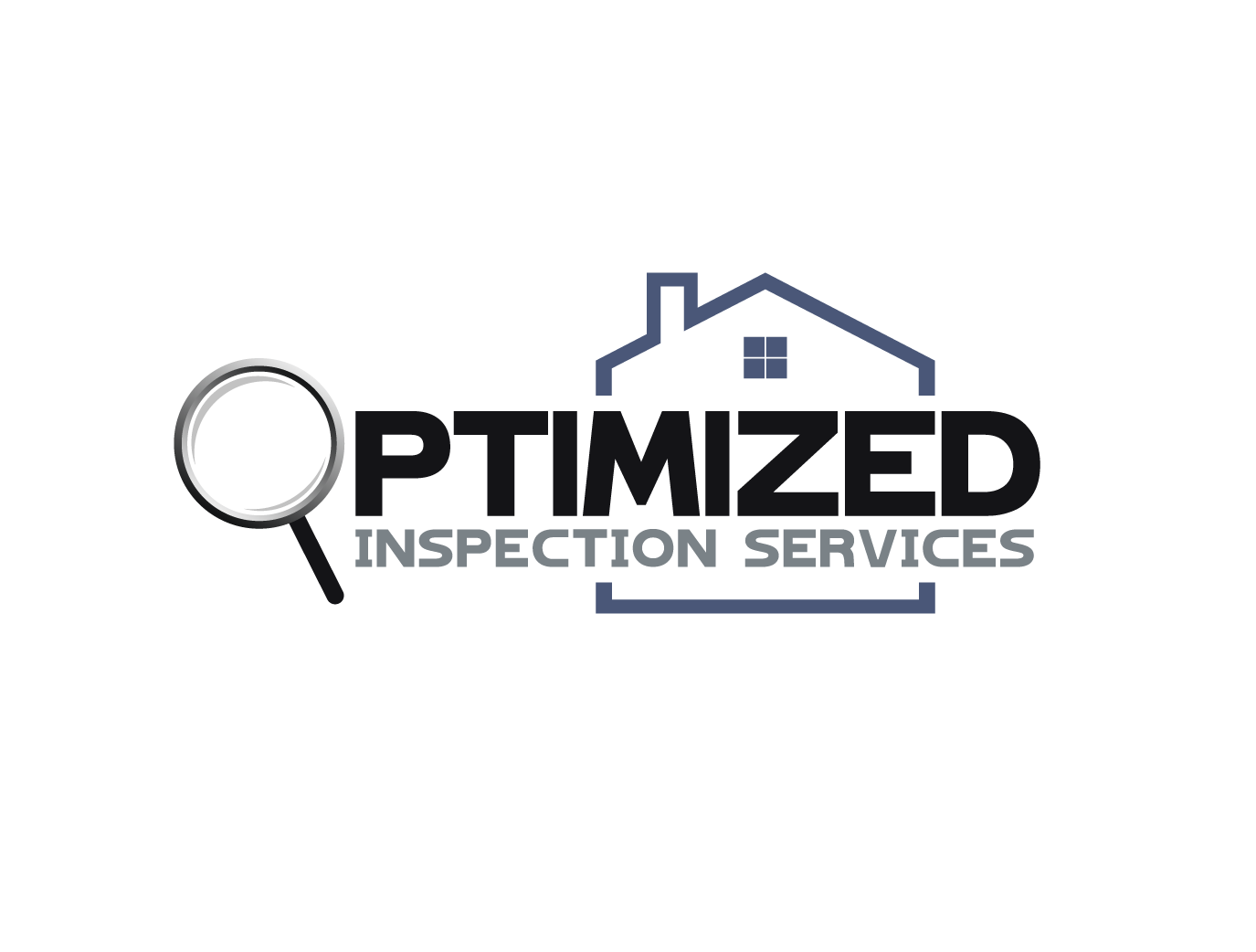
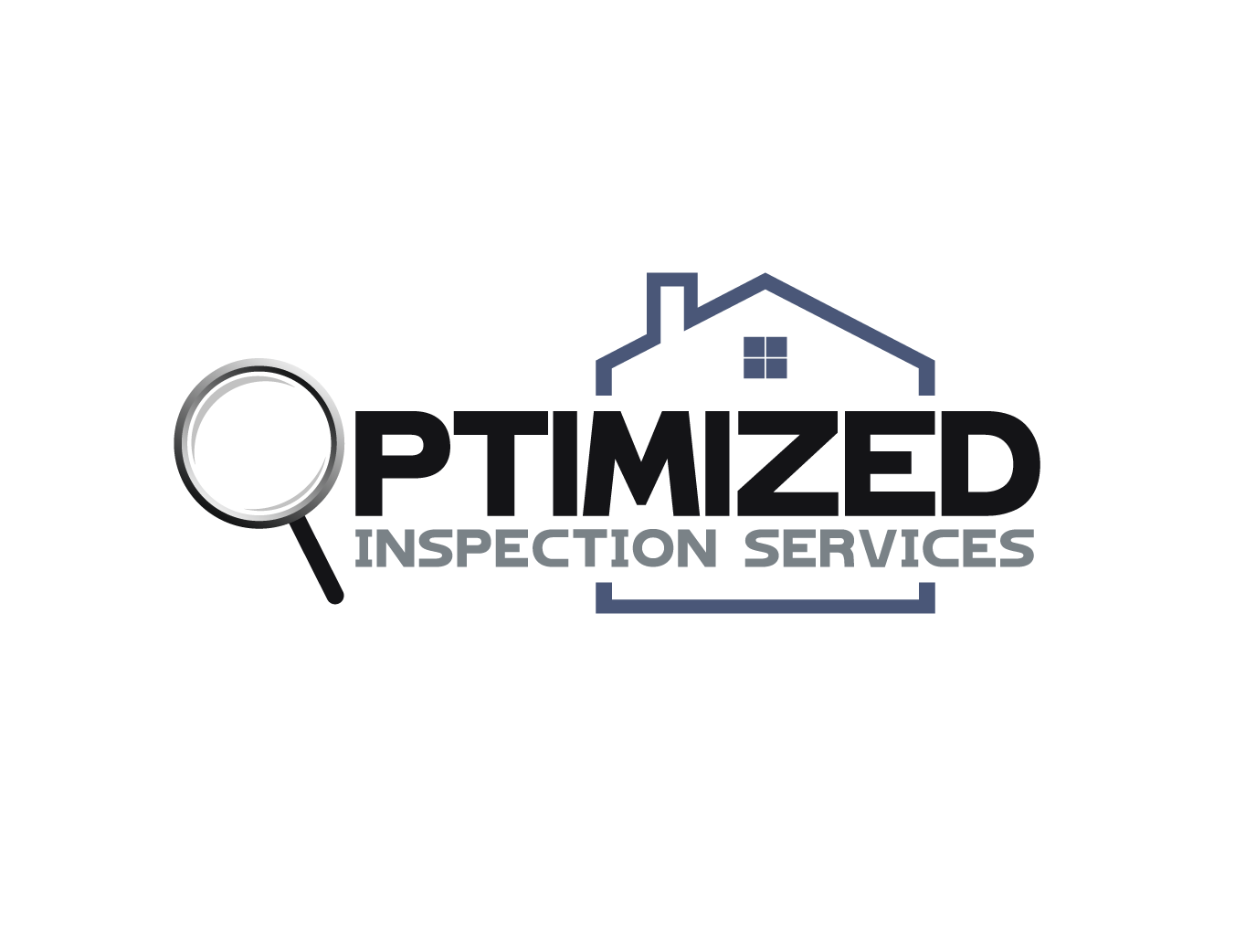
p20(1).png)

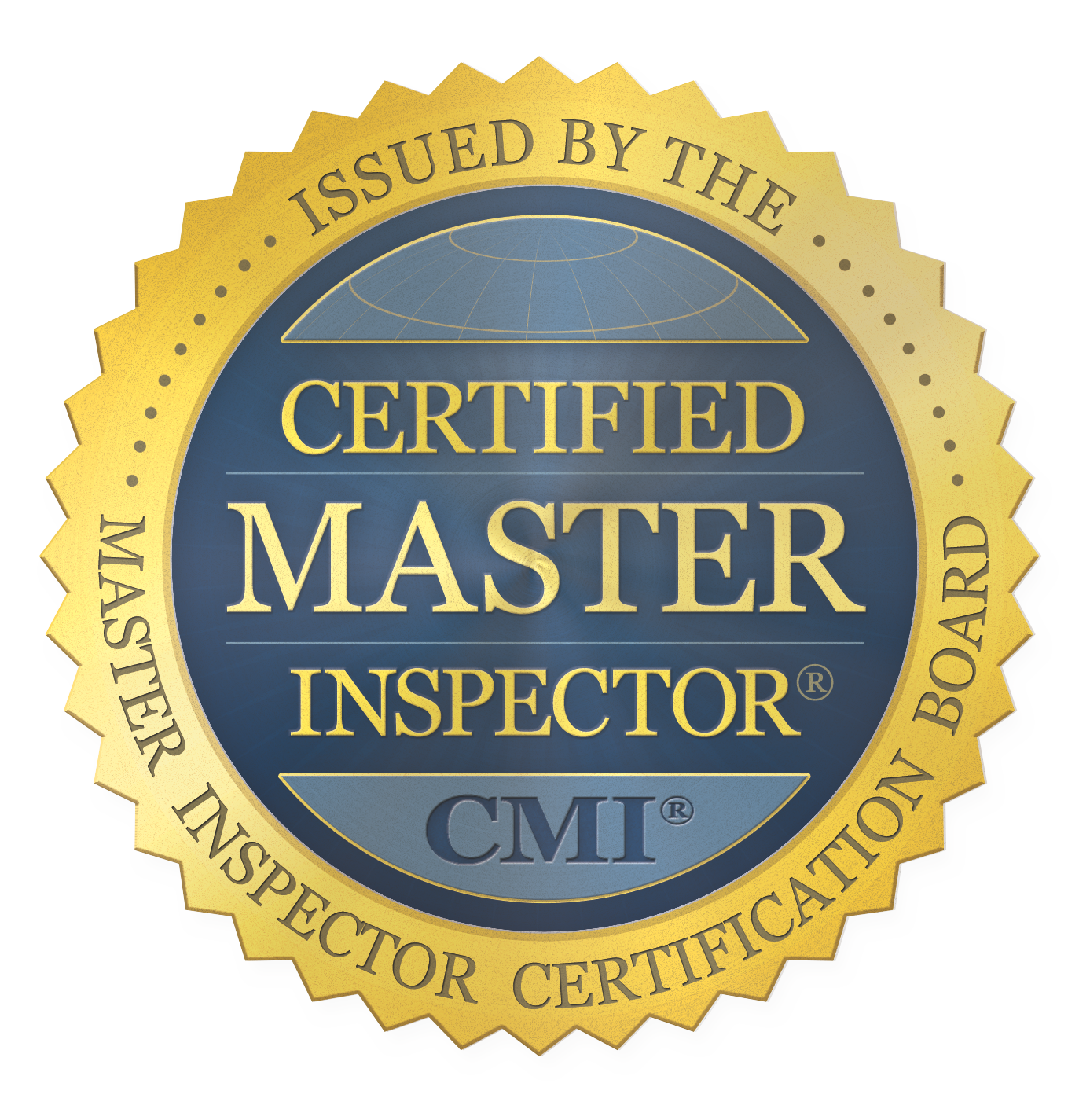
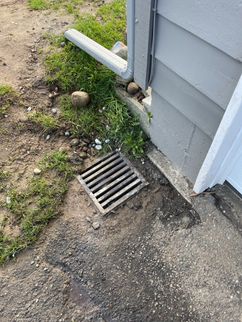
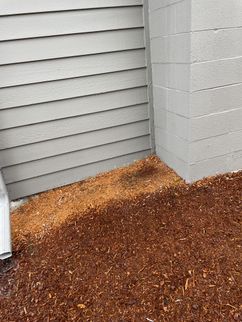
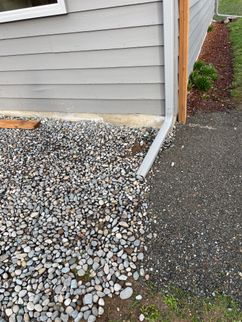
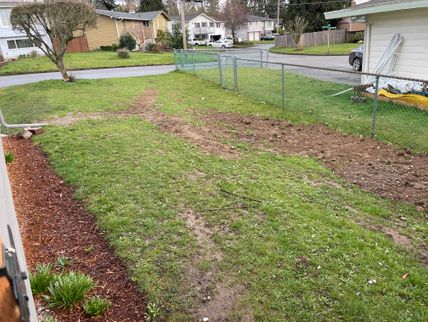
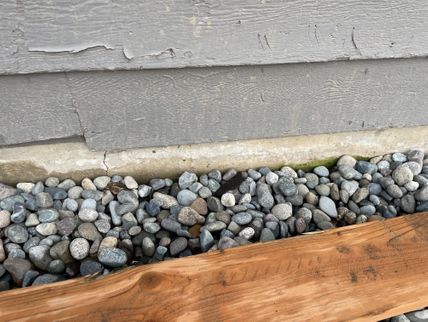
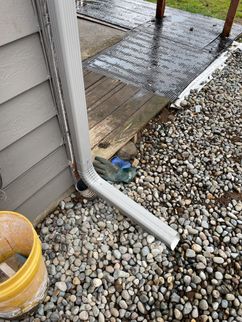
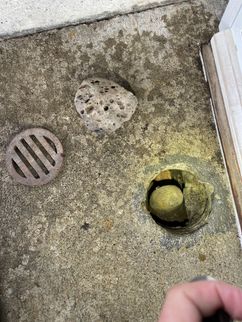
.jpg)
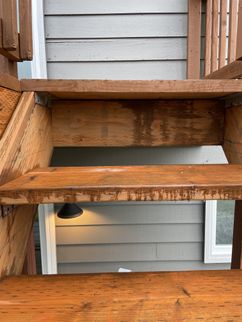

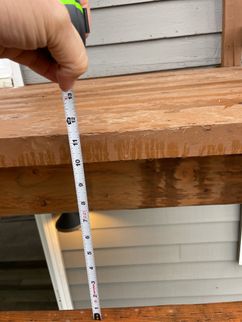
.jpg)
.jpg)
.jpg)
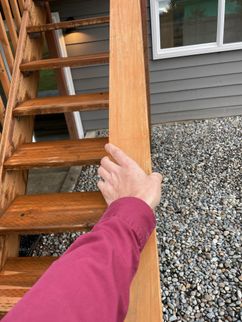
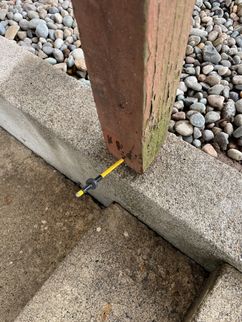
 (1).jpg)
.jpg)
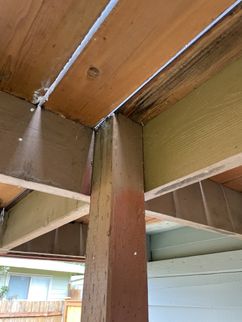
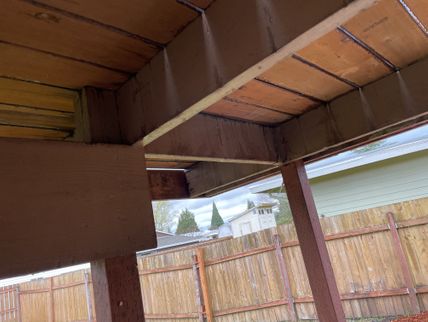
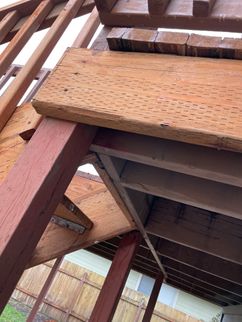
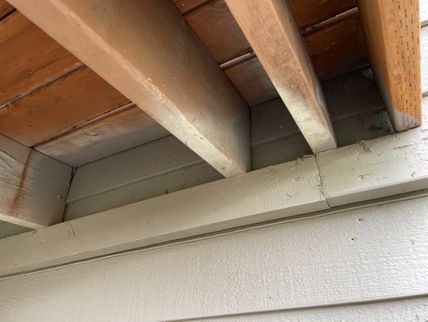
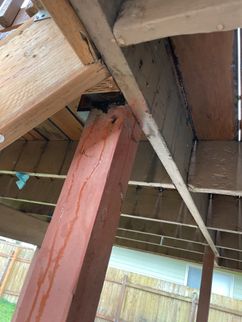
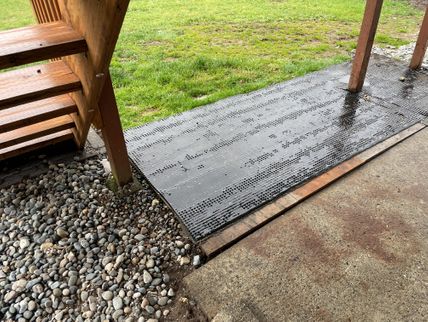
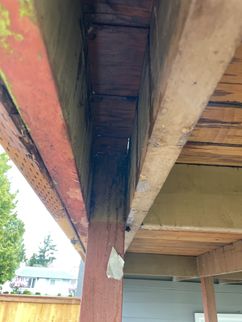
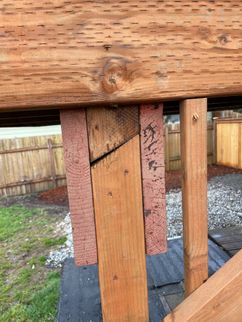
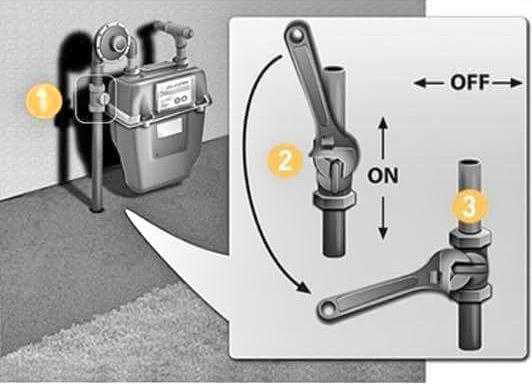
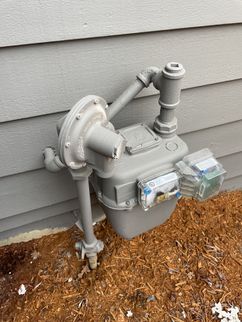
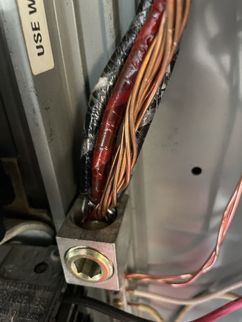
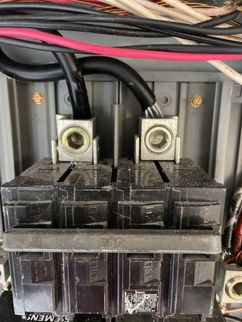
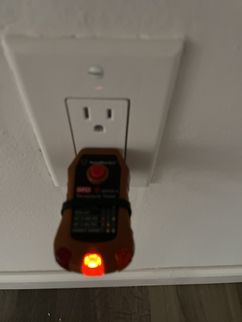
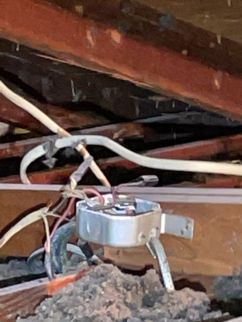
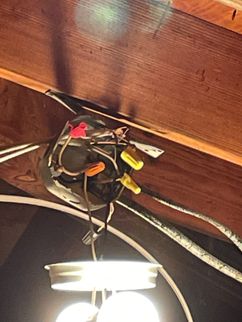
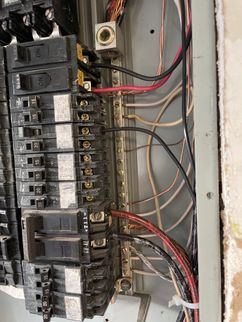
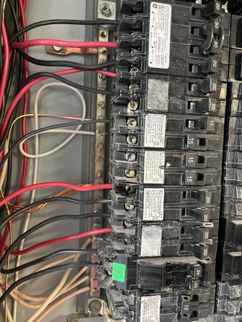
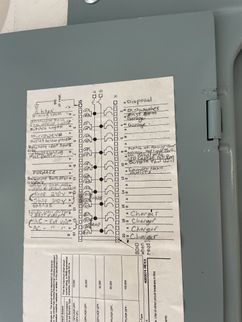

.jpg)
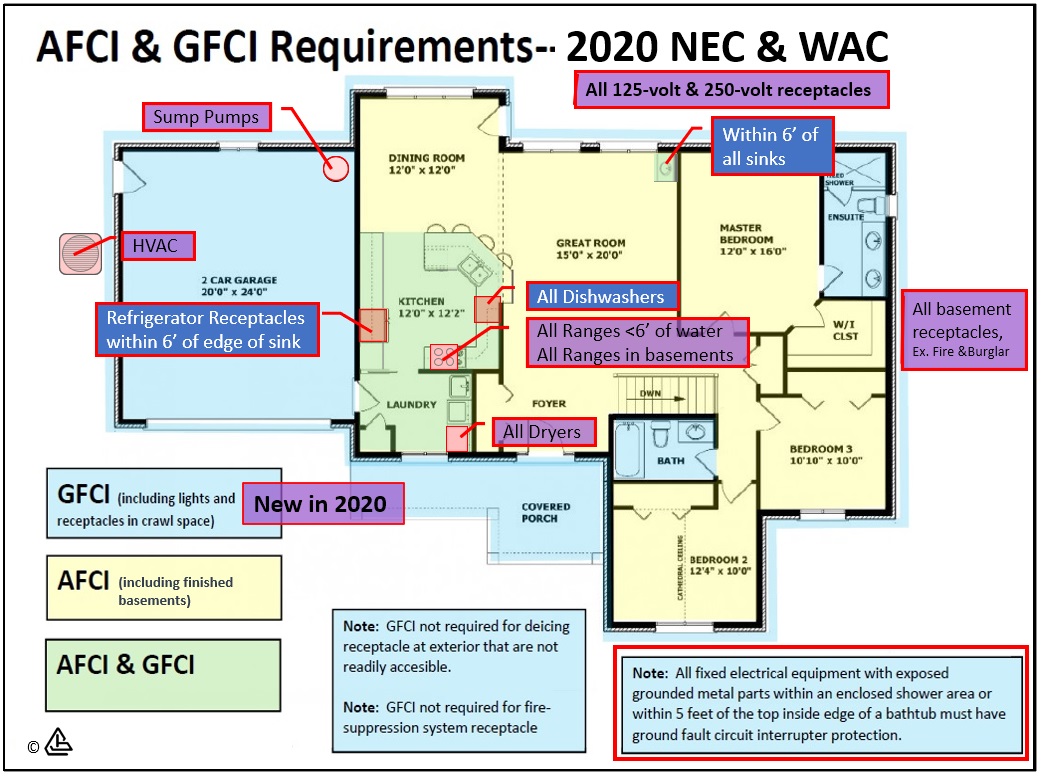
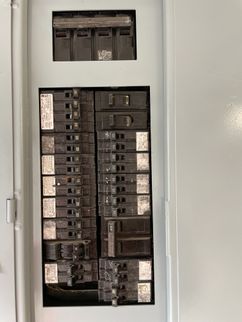
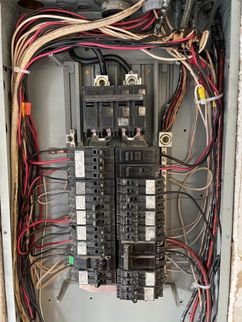
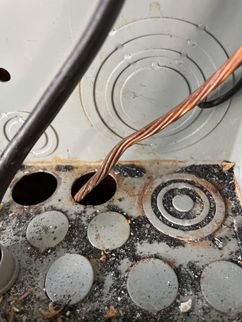
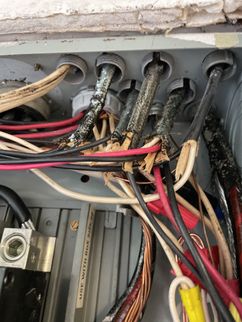
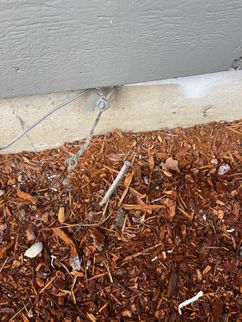
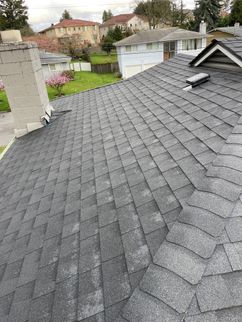
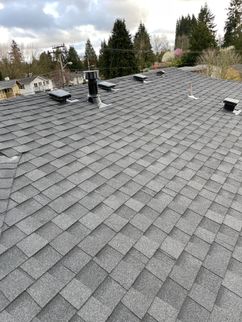
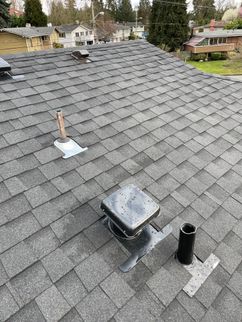
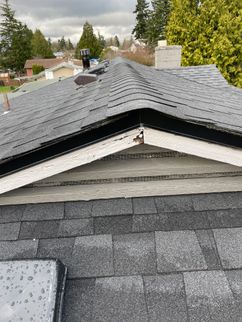
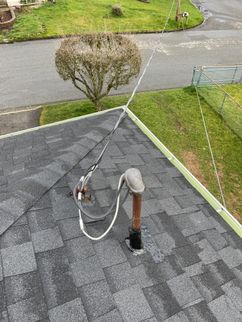
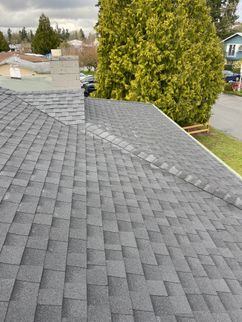
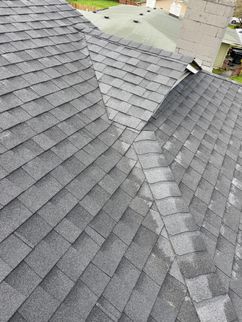

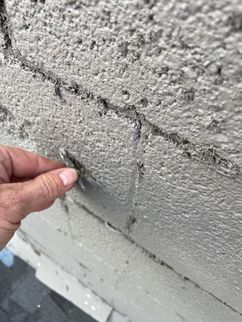
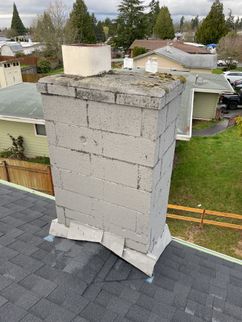
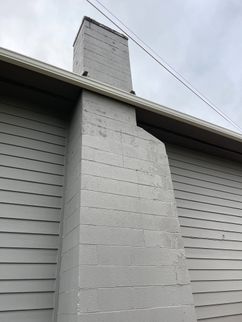
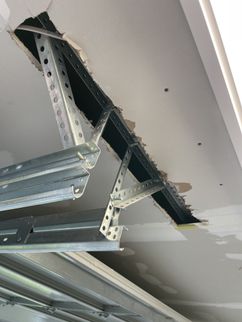
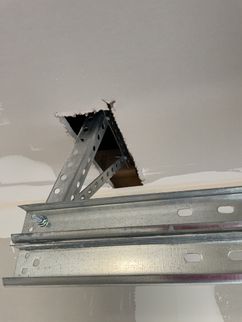
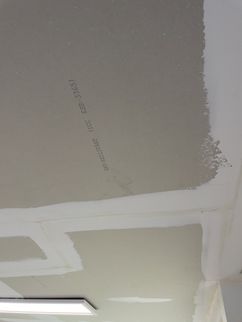
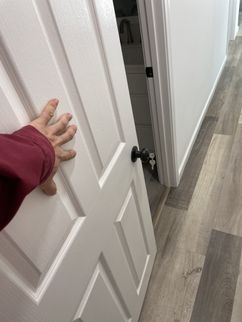
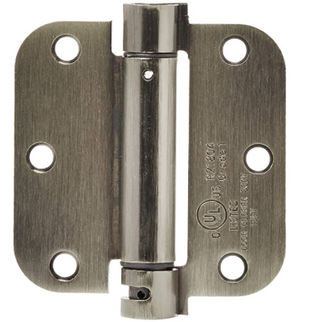
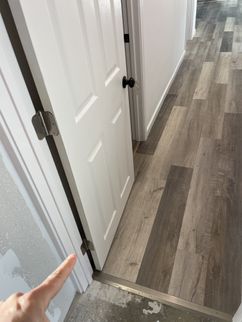
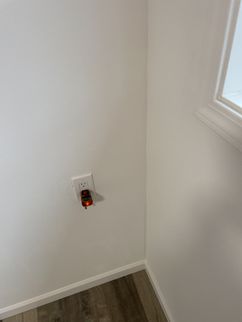
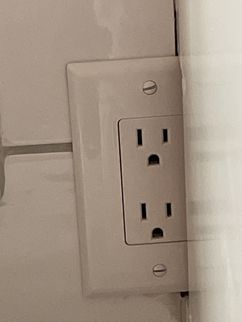
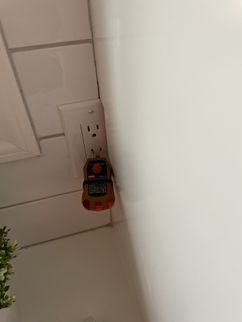
.png)
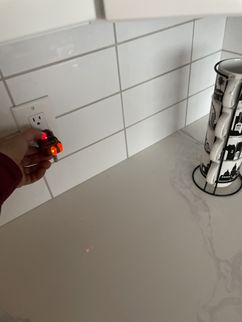
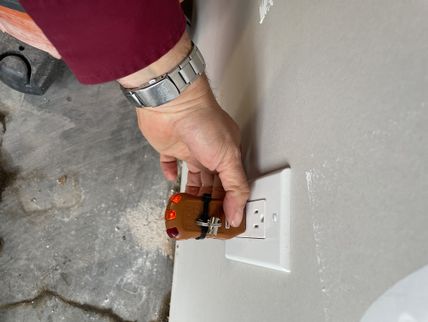
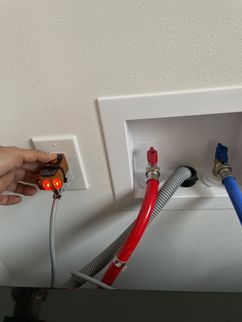
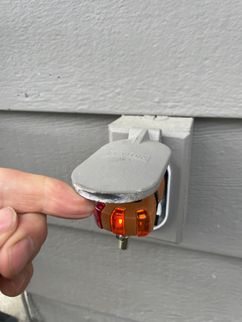
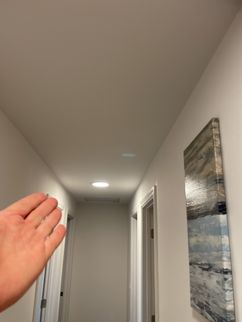
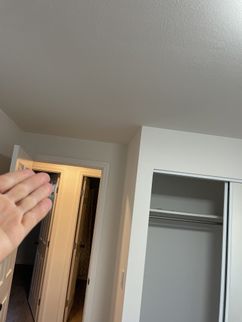
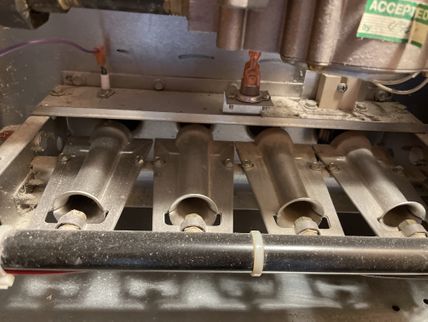
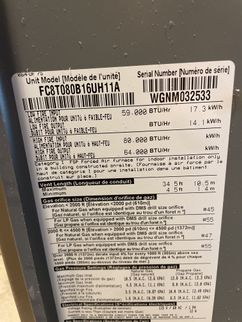
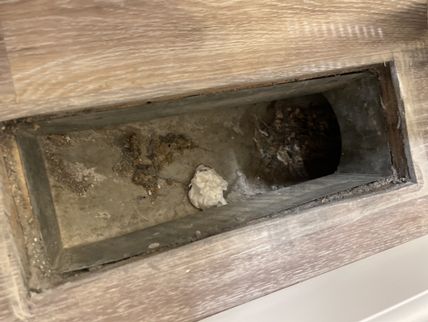
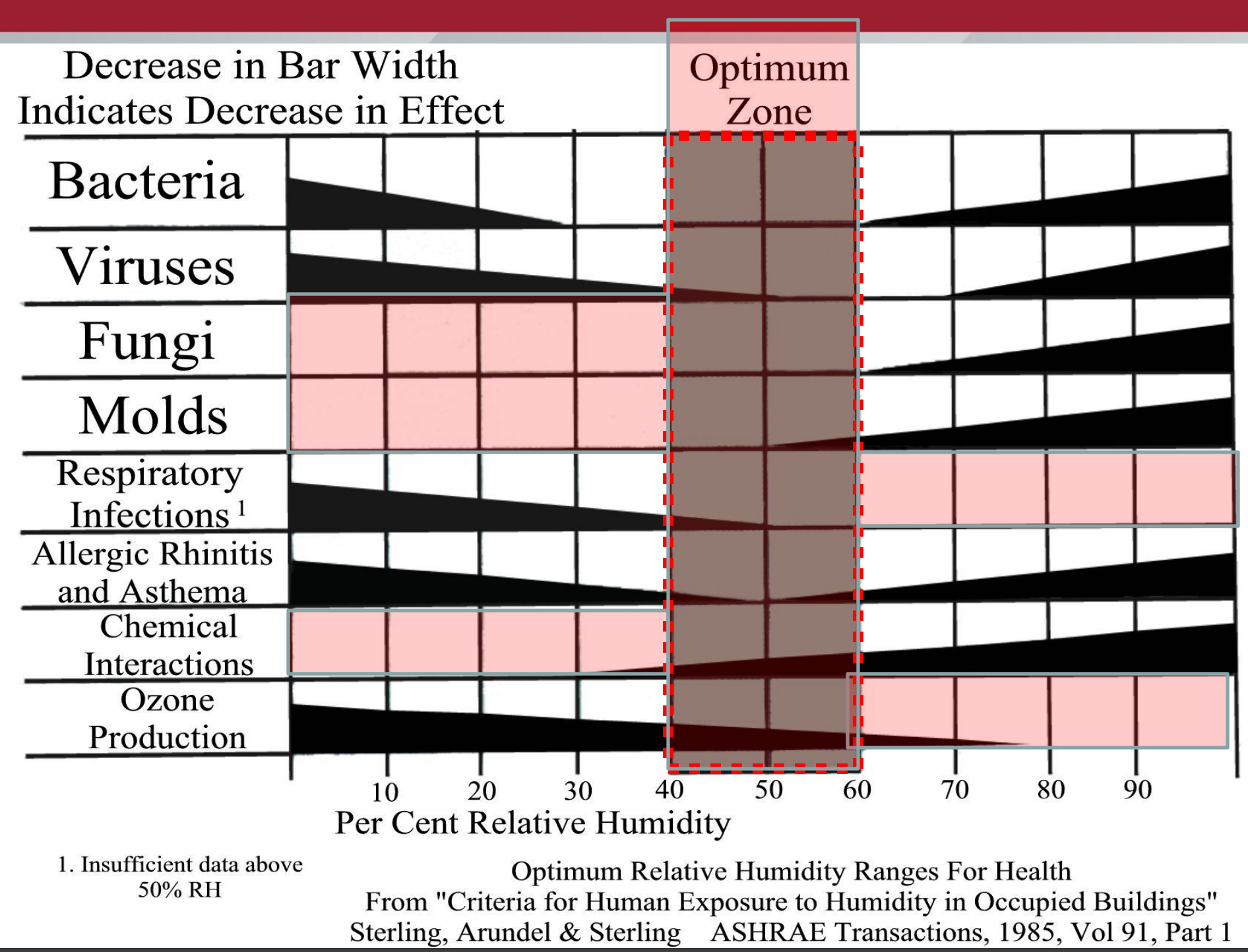
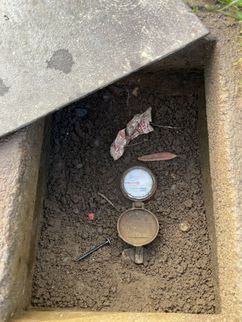
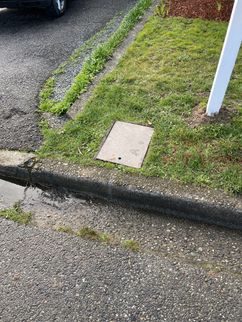
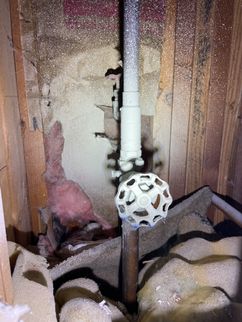
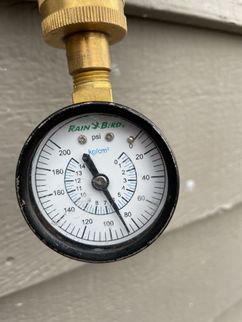
.jpg)
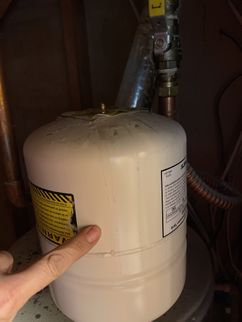
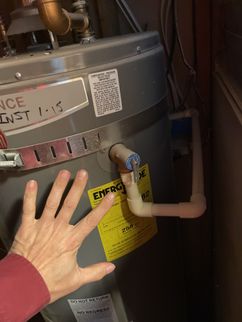
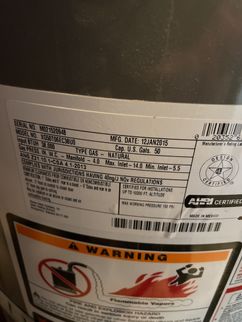
 (1).jpg)

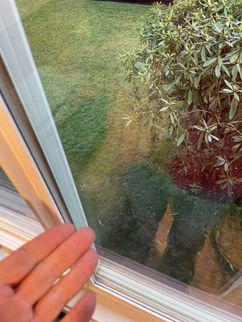
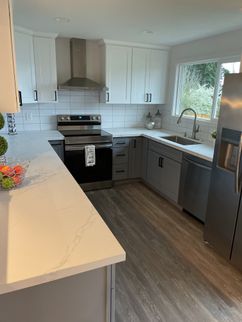
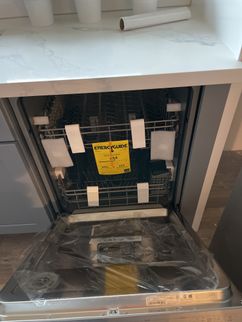
.jpg)
.jpg)
